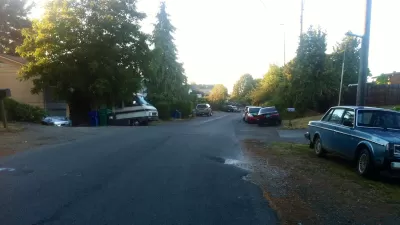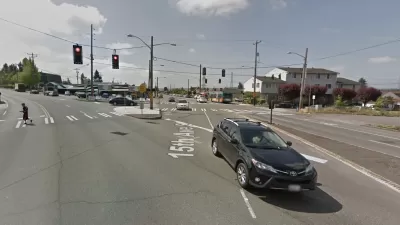Move Seattle included a promise of 250 blocks of new sidewalks and pathways. But costs are much higher than predicted and the low-cost pathways are minimal improvements for pedestrians.

Ryan Packer reports on that status of sidewalks as part of the Levy to Move Seattle, a $930 million levy approved by voters in 2015 to fund transportation investments throughout the city. The sidewalk program included a target goal of 250 blocks of permanent sidewalks and low-cost pathways.
Due to rising cost estimates, Packer says the number of sidewalks and pathways has changed and now only 120 blocks will be permanent sidewalks, down from 150 blocks:
Increased costs are the reason that SDOT [Seattle Department of Transportation] needed to reconfigure the ratio of low-cost sidewalks to traditional ones, but the program cost numbers overall are pretty concerning for pedestrian advocates. Despite the original estimate of $350,000 per block used in the Pedestrian Master Plan, the current plan for the 250 blocks is to spend $380,000, on average, per block, despite a majority of the blocks constructed in the plan being low-cost sidewalks, which had an original estimate of $100,000 per block.
Packer says the shift to low-cost pathways is problematic since the vast majority of pedestrian injuries and deaths occur on main arterials, which need permanent sidewalks.
In his article, Packer also takes a closer look at the quality of sidewalks and pathways constructed during 2016 and 2017, many of which are on blocks that had existing sidewalks. He finds that generally the low-cost pathways are not separated from the street and do not offer protection for pedestrians.
FULL STORY: Is the New Sidewalk Program Living Up to Its Promise?

Maui's Vacation Rental Debate Turns Ugly
Verbal attacks, misinformation campaigns and fistfights plague a high-stakes debate to convert thousands of vacation rentals into long-term housing.

Planetizen Federal Action Tracker
A weekly monitor of how Trump’s orders and actions are impacting planners and planning in America.

In Urban Planning, AI Prompting Could be the New Design Thinking
Creativity has long been key to great urban design. What if we see AI as our new creative partner?

King County Supportive Housing Program Offers Hope for Unhoused Residents
The county is taking a ‘Housing First’ approach that prioritizes getting people into housing, then offering wraparound supportive services.

Researchers Use AI to Get Clearer Picture of US Housing
Analysts are using artificial intelligence to supercharge their research by allowing them to comb through data faster. Though these AI tools can be error prone, they save time and housing researchers are optimistic about the future.

Making Shared Micromobility More Inclusive
Cities and shared mobility system operators can do more to include people with disabilities in planning and operations, per a new report.
Urban Design for Planners 1: Software Tools
This six-course series explores essential urban design concepts using open source software and equips planners with the tools they need to participate fully in the urban design process.
Planning for Universal Design
Learn the tools for implementing Universal Design in planning regulations.
planning NEXT
Appalachian Highlands Housing Partners
Mpact (founded as Rail~Volution)
City of Camden Redevelopment Agency
City of Astoria
City of Portland
City of Laramie





























